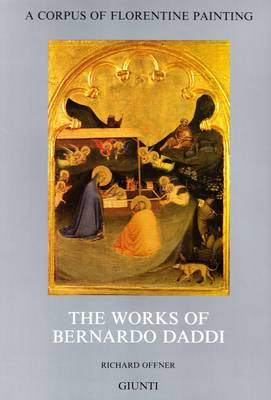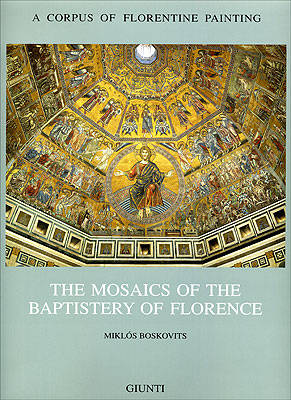Corpus of Florentine Painting
3 total works
Section III, vol 3
Begun in 1930 by renowned art historian Richard Offner, "A Corpus of Florentine Painting" offers researchers, students, scholars, and fine-art enthusiasts an unrivalled scientific, historical, and critical exploration of pre-Renaissance Florentine art. Each volume consists of an historical and critical study on an artist, group of artists, or art-related topic, alongside a comprehensive and magnificently illustrated catalogue of their works and related documents. This is the latest volume in the series.
Section I, Vol 1
Founder of modern Italian painting and leading light of the Florentine school, Giotto's name is familiar to most people, both in Italy and abroad. It is also widely known that he completed his training in the workshop of Cimabue, one of the outstanding artists of the late-13th century. As far as the previous decades and centuries are concerned, however, even the experts have to admit that their knowledge is hazy and lacking in detail, largely due to the fact that 90 percent of the period's pictorial output has been destroyed. The few paintings that survive have, all too often, been removed from their original context, are fragmentary, or have an uncertain history of provenance or author. This volume attempts to provide a comprehensive study of the paintings produced in Florence between circa 1100 and 1270 - the scope of the book ranges from early examples of medieval art to the generation of painters preceding Cimabue. All known works of the period are included, accompanied by descriptions, discussions, thorough catalogue references and reproductions.
The critical catalogue is complemented by a complete transcription of documentation relating to the works and artists of medieval Florence, as well as by a wide-ranging introductory study. This traces the progress of artistic development in Florence over the 12th and 13th centuries, focusing on the painters themselves and placing their output within the wider context of Italian and European painting in the Middle Ages. Amongst the numerous little-known and previously unknown figures which emerge are found - the Maestro della Madonna di Revezzano, the Maestro del Bigallo, the Maestro della Croce no 434 in the Uffizi, Coppo di Marcovaldo, Salerno di Coppo, Meliore and the Maestro di Sant'Agata. Thus, there is ample proof that Giotto's art was actually rooted in a fertile cultural tradition which had, over the previous 200 years, produced artists of outstanding quality.
The critical catalogue is complemented by a complete transcription of documentation relating to the works and artists of medieval Florence, as well as by a wide-ranging introductory study. This traces the progress of artistic development in Florence over the 12th and 13th centuries, focusing on the painters themselves and placing their output within the wider context of Italian and European painting in the Middle Ages. Amongst the numerous little-known and previously unknown figures which emerge are found - the Maestro della Madonna di Revezzano, the Maestro del Bigallo, the Maestro della Croce no 434 in the Uffizi, Coppo di Marcovaldo, Salerno di Coppo, Meliore and the Maestro di Sant'Agata. Thus, there is ample proof that Giotto's art was actually rooted in a fertile cultural tradition which had, over the previous 200 years, produced artists of outstanding quality.
Filled with glorious full-colour and black & white illustrations, this is the most comprehensive guide to pre-Renaissance Florentine painting available. Begun in 1930 by renowned art historian Richard Offner, "A Corpus of Florentine Painting" offers researchers, students, scholars, and fine-art enthusiasts an unrivalled scientific, historical, and critical exploration of pre-Renaissance Florentine art. Each volume consists of an historical and critical study on an artist, group of artists, or art-related topic, alongside a comprehensive and magnificently illustrated catalogue of their works and related documents. The latest volume in the series is: "The Mosaics Of The Baptistery of Florence". The first full monograph on the stunning mosaic decoration of the Baptistery of St John in Florence - the largest thirteenth century pictorial cycle in Tuscany, and undoubtedly one of the most important of the period.


